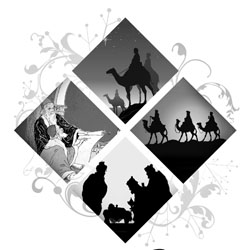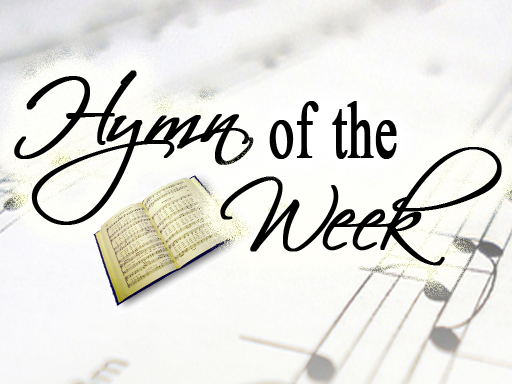Good King Wenceslas
Genre: The Life of a Saint, 907-929/935 AD
Reading Time (for story text): approx. 5 minutes
Audio Recording:
Note that this audio link for the story does not correspond to the text below. It is a retelling of the famous carol “Good King Wenceslas” in story form (approx 18 minutes). A link for hearing the carol (approx 4 min) is also provided.
To download these Storynory recordings, visit Storynory for Good King Wenceslas (the story) or Wenceslas (the carol).
Audio clip: Adobe Flash Player (version 9 or above) is required to play this audio clip. Download the latest version here. You also need to have JavaScript enabled in your browser.
Audio clip: Adobe Flash Player (version 9 or above) is required to play this audio clip. Download the latest version here. You also need to have JavaScript enabled in your browser.
The Background
Wenceslas is the Germanized form of “Václav the Good.” He was born to the first Christian Duke of Bohemia (part of the modern day Czech Republic) and became Duke himself at age 18. His brother murdered him in either 929 or 935 (sources vary), and he was soon thereafter honored as a saint.
Though Wenceslas was well known in his native land, he was virtually unknown in the English speaking world until John Mason Neale, translator of the carols “Good Christian Men Rejoice” and “O Come, O Come Emmanuel,” popularized his story in the song “Good King Wenceslas.” Neale was a Latin scholar who patiently researched the records of European lands in order to bring the great music and traditions of the past to England.
Since Neale devoted himself to the needs of the poor and oppressed, he was understandably intrigued by the gracious and generous life of Wenceslas. Though Neale is best known for his work as a translator, his lyrics for “Good King Wenceslas” were an original work. He set his words to a 14thcentury tune, Tempest adest floridum, which was formerly sung in the spring and means “the time has arrived for flowers to bloom.” Neale’s song, however, was first published in Carols for Christmastide (1853). Though the song is set on St. Stephen’s Day, December 26, and though there is no mention of Christmas, Neale wrote it at a time when the greatest celebrations of Christmas took place on the 12 days following the holiday. Thus, as the song gained popularity, King Wenceslas came to be intimately associated with Christmas. The words of Neale’s song tell a beautiful story and are as follows:
“Good King Wenceslas looked out,
On the feast of Stephen,
When the snow lay round about,
Deep and crisp and even:
Brightly shone the moon that night,
Though the frost was cruel,
When a poor man came in sight,
Gathering winter fuel.
“‘Hither page and stand by me,
If thou know’st it, telling —
Yonder peasant, who is he?
Where and what his dwelling?’
‘Sire, he lives a good league hence,
Underneath the mountain,
Good King Wenceslas
Right against the forest fence,
By Saint Agnes’ fountain.’
“‘Bring me flesh and bring me wine!
Bring me pine logs hither!
Thou and I will see him dine,
When we bear them thither.’
Page and monarch forth they went,
Forth they went together;
Though the rude winds wild lament,
And the bitter weather.
“‘Sire, the night is darker now,
And the wind blows stronger;
Fails my heart, I know not how,
I can go no longer.’
‘Mark my footsteps, good my page,
Tread thou in them boldly:
Thou shalt find the winter’s rage
Freeze thy blood less coldly.’
“In his master’s steps he trod,
Where the snow lay dinted;
Heat was in the very sod
Which the saint had printed.
Therefore, Christian men, be sure,
Wealth or rank possessing,
Ye who now will bless the poor,
Shall yourselves find blessing.”
It should be noted that though Wenceslas was a duke, the title of “king” was conferred on him after his death by Otto the Great, who was crowned Holy Roman Emperor in 962.
Today, most Americans are only vaguely familiar with the story of King Wenceslas, if at all. However, his life is a model for Christian living, and the traits for which he is honored, kindness and generosity, are qualities that are especially valued during the Christmas season.
Without doubt, Wenceslas was a historical ruler and a faithful Christian. However, the details of his life exist mainly in oral tradition. The following story is woven into the known history of the era and is drawn from both the Catholic Encyclopedia1 and the Oxford Dictionary of Saints.2
Sources:
1 Mershman, Francis. “St. Wenceslaus.” Catholic Encyclopedia. Robert Appleton Company, 1912. Retrieved October 4, 2008 from New Advent: http://www.newadvent.org/cathen/15587b.htm and Ott, Michael. “St. Ludmilla.” Robert Appleton Company, 1910. Retrieved October 4, 2008 from New Advent: http://www.newadvent.org/cathen/09416a.htm.
2 Farmer, David Hugh. The Oxford Dictionary of Saints. Oxford University Press, 2004, pp. 534-535.
********************
Text of the Story:
Though born of the same parents within moments of each other, Wenceslas and Boleslaus, twin brothers, could not have been more different. From infancy, Wenceslas was full of warmth and smiles; Boleslaus, on the other hand, was cold and aloof.
Wenceslas’ pleasant nature and early interest in things of God won him special favor in the eyes of Ludmilla, his paternal grandmother. Ludmilla had converted to Christianity in her youth through the influence of Saint Cyril and Saint Methodius, two brothers from Thessalonica, who served as missionaries to the Slavic people. Ludmilla and her husband Boriwoi, the first Christian Duke of Bohemia, withstood great difficulties on account of their faith, since there were very few believers in their pagan land. Yet, these trials only served to increase Ludmilla’s faith, and she committed to raise her family up in the Lord. Unfortunately, her son Wratislaw married a woman who only pretended to be a Christian. Drahomira was the daughter of a pagan tribal chief and was baptized into Christianity so she could marry into a powerful family.
When Wratislaw died, his boys, Wenceslas and Boleslaus, were only 8 years old. Devastated by the loss of her son, Ludmilla devoted herself all the more to her beloved grandson, Wenceslas. The growing intimacy between Ludmilla and Wenceslas sparked bitter jealousy in the heart of his mother Drahomira. Furthermore, she began to openly oppose Christianity. Seizing on tensions between believers and non-believers, Drahomira incited two noblemen to murder Ludmilla. Though her life on earth ended, Ludmilla’s influence on Wenceslas remained. Christian friends continued to encourage him in his faith and to educate him in the things of God.
Meanwhile, the ambitious Drahomira was acting as regent in Bohemia, and her evil reign caused unhappiness and discord throughout the land. When Wenceslas, the older of her twins, turned 18, he easily took the reigns of government from her.
Wenceslas proved to be a capable young leader, and he initiated many changes for the benefit of his people. For example, he reduced the arbitrary power of judges in order to create a system of justice for all, and he worked hard to establish good relations with surrounding nations. Yet, of all Wenceslas’ efforts on behalf of his nation, the most striking involved his personal acts on behalf of the poor. He was known to carry provisions on his own shoulders and travel through difficult weather in order to provide for his people. Every year, as Christmas ushered in the cold season, a time that could devastate the poor, Wenceslas would exert his greatest effort to supply the poor with basic necessities. As a result, Wenceslas was an extremely popular ruler among his people, and the Lord used him to draw many pagans to Christianity.
However, Wenceslas’ Christian influence was not welcome by all, particularly by those of the noble class. He was known to encourage the work of German missionaries in their efforts to Chris¬tianize Bohemia. And furthermore, in order to prevent war, Wenceslas agreed to pay a tribute to Germany for the protection of his people. This was very unpopular among the noble and nationalistic Bohemians, and it gave Drahomira the opportunity to start building alliances within the kingdom on behalf of her other son, Boleslaus.
Drahomira exercised great influence over Boleslaus, and though he loved Wenceslas, Drahomira spent many years and used many persuasive words to incite him against his brother. By 935, believing that he was doing what was best for his country, Boleslaus submitted to his mother’s evil plan. He invited Wenceslas to a religious feast, and on the way to church, he had his brother murdered.
When Boleslaus arrived on the scene, his dying brother looked mercifully into his eyes and said, “Dear brother, may God forgive you and may you seek him that I might see you again in heaven.” As Wenceslas breathed his last, Boleslaus was overcome with remorse and wept bitterly over his brother’s dead body. Within hours, Boleslaus received news of the birth of his own son. Ominously, he named him “Strachkvas” meaning “a dreadful feast.”
Though his murder earned him the title “Boleslaus the Cruel,” his reign (929-967) was marked by acts of repentance. He trained his children in the Christian faith and even sent his daughter Mlada (a nun) to Rome requesting permission to allow a bishop the authority to govern Prague. His son who succeeded him as Duke of Bohemia came to be known as Boleslaus II the Pious.
Boleslaus was also largely responsible for establishing Wenceslas’ place in history. He set up a memorial for his brother at St. Vitus’ Cathedral in Prague, and he encouraged the people of Bohemia to remember Wenceslas’ good and generous life. By 985, a feast for Wenceslas celebrated him as a martyr of the faith, and by the early 11th century, he became the patron saint of Bohemia. His picture was engraved on coins, and his crown became a symbol of the Czech nation.
********************
This page was created by:

Back to main Christmas Stories page.
We welcome your ideas! If you have suggestions on how to improve this page, please contact us.
The content for the background is drawn from our Christmas book and has a copyright © 2008 by Angie Mosteller. You may freely use this material if you cite the source and/or link back to this page.





